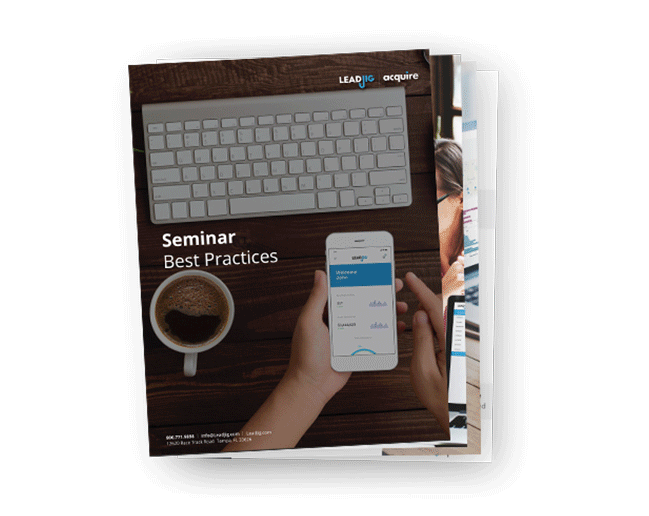The Essential Guide to Native Advertising
As consumers show increasing signs of ad fatigue, companies are turning to more innovative forms of marketing to promote their brand and expand their audience.
One of the most popular marketing tactics is native advertising, also known as advertorials. This non-disruptive digital ad is designed to be cohesive with the surrounding platform’s design and functionality. The viewer feels the advertising belongs there and is more likely to engage with its content.
Though native content is highly effective in capturing viewers’ attention and increasing purchase intent, the growing use of native advertising has created significant debate. Some native ads look similar to the surrounding editorial or other content that viewers may find hard to distinguish between neutral content and paid advertising. This confusion ultimately undermines consumer trust in both the publisher’s platform and the advertiser’s brand.
So, what are native ads? Read on for our ultimate guide to native advertising, where we explore what they are, how they work, and offer advertorial examples. Hopefully, you can then decide if native advertising is the right strategy for you.
What is Native Advertising?
Before taking a deep dive into the form and function of native marketing, let’s take a look at the native ads definition.
Native Advertising Definition
Native ads are paid promotional content that aligns with the surrounding platform’s look and behavior to seem less invasive for the viewer and non-disruptive to the overall user experience. The most common forms of native advertising are embedded in social media feeds or as “recommended” or “promoted” content on a web page.
Where traditional banners or other types of digital ads jump out at the viewer, these types of native ads blend into the editorial flow of the page and expose the audience to advertising content. They do this without interrupting the look or feel of the digital experience.
Sponsored Content Definition
Sponsored content is a subset of native ads. This type of organic advertising is created by the publication, partnered brand, or influencer that hosts the content. In contrast, native ads are created directly by the advertiser and simply inserted into the hosting platform’s content.
How Native Ads Work
Native marketing offers significant advantages for both the hosting platform and the advertiser. The host—a publishing outlet, e-commerce website, search engine, or social media platform, for example—can monetize their platform by including paid native ads that are relevant and cohesive. The hosting platform or publisher is produced by the advertiser for advertising space and/or each time a user clicks through to an advertiser’s video, content, microsite, or brand website.
On the other hand, advertisers can expand their reach and enhance their brand awareness by leveraging the audience and credibility of the hosting platform in a way that is unobtrusive and organic to the surrounding content. They can engage audiences who are already consuming related content to enhance the impact of their messaging, and drive traffic to their site on another platform, leading to a lift in leads and sales.
Users also benefit from well-crafted, clearly marked native ads that allow them to consume content without the disruption of banner or pop-up ads, and they can engage with marketing content in a less invasive way and easier to navigate on their terms.
The Native Advertising Debate
The advantages of native advertising are clear but have also fueled debate about transparency and consumer protection. Though the vast majority of publishers feature some sort of native ads on their platform and a growing number of brands use this type of marketing, many consumers have no idea what native advertising is. They cannot distinguish between neutral content and paid ads.
This confusion between a publisher’s content and paid content can undermine consumer trust in the neutrality of media outlets, search engines, and influencers. Consumer watchdogs like the Federal Trade Commission (FTC) and the Interactive Advertising Bureau (IAB) have begun to regulate and monitor the use of native advertising. This makes native ads less vague and easier to recognize, ensuring that viewers are not misled.
Today, native ads have several features to set them apart from neutral content and help consumers identify them as paid advertising. Consumer protection guidelines suggest that native ads include one or more of the following:
- Identifiers in the form of phrases like “Suggested Post,” “Recommended For You,” or “Promoted Stories” are inserted prominently above the content copy.
- A small corner icon that clicks through to a message clarifying that the content is a paid ad.
- The label “Sponsored” or a sponsorship credit is displayed near the content title or “Recommended” or “Suggested” near the title of a video.
Native Ads Examples
The IAB Native Advertising Task Force defined six core formats for ads that qualify as native marketing. Here we’ll take a look at the five most common examples:
- In-feed ads. These are ads that appear in the feed of social media platforms or publishing outlets and are customized to match the look and feel of the host and the interests of the viewer.
In-feed ads can direct to branded content like articles or videos, the advertiser’s website or e-commerce platform, or the brand’s social media profiles or content marketing platforms like a blog or video channel. - Paid search ads. Featured at the top of a list of search results or in a sidebar, these ads reflect the search terms and direct the viewer to click through to the paid search ad as if it were an organic search result.
- Recommendation widgets. Content recommendations can appear below an article to direct readers to a related article or video hosted on the advertiser’s platform, social media feed, or other branded content.
- Promoted listings on shopping websites. Like paid search ads, promoted listings reflect the parameters of the user’s search and navigation behavior by serving similar products or services from the advertiser’s e-commerce site.
- Custom content units. A flexible category encompassing a wide range of forms, custom content units are produced by a joint effort between an advertiser and publisher, and they are too platform-specific to be grouped into the other categories of native ads.
Specific examples of this type of branded content include a playlist on a music streaming app, a workout on a fitness app, or a filter on a social media platform like Snapchat.
Are Native Ads Right for You?
Despite the controversy around their sometimes vague and confusing nature, native advertising is an increasingly popular marketing tactic for businesses looking to expand their audience, increase brand awareness, and boost sales.
Native ads are one of the most engaging and impactful means to reach a targeted market. Consumers are more likely to look at in-feed native ads than standard advertising banners or pop-ups and neutral editorial content. Besides, native ads are highly effective in reinforcing brand awareness and recognition, and produce a higher lift in purchase intent than traditional forms of advertising.
In short, native advertising offers significant benefits for businesses as a marketing tool, as long as companies are careful to use best practices to avoid consumer confusion that can undermine the brand’s perceived trustworthiness and credibility.
Why Work with LeadJig
At LeadJig, we have experience incorporating innovative and impactful native ads into a larger financial marketing strategy to enhance brand recognition and produce leads. Contact us today to learn more about our financial marketing services and how our financial advisor marketing platform can grow your business.





